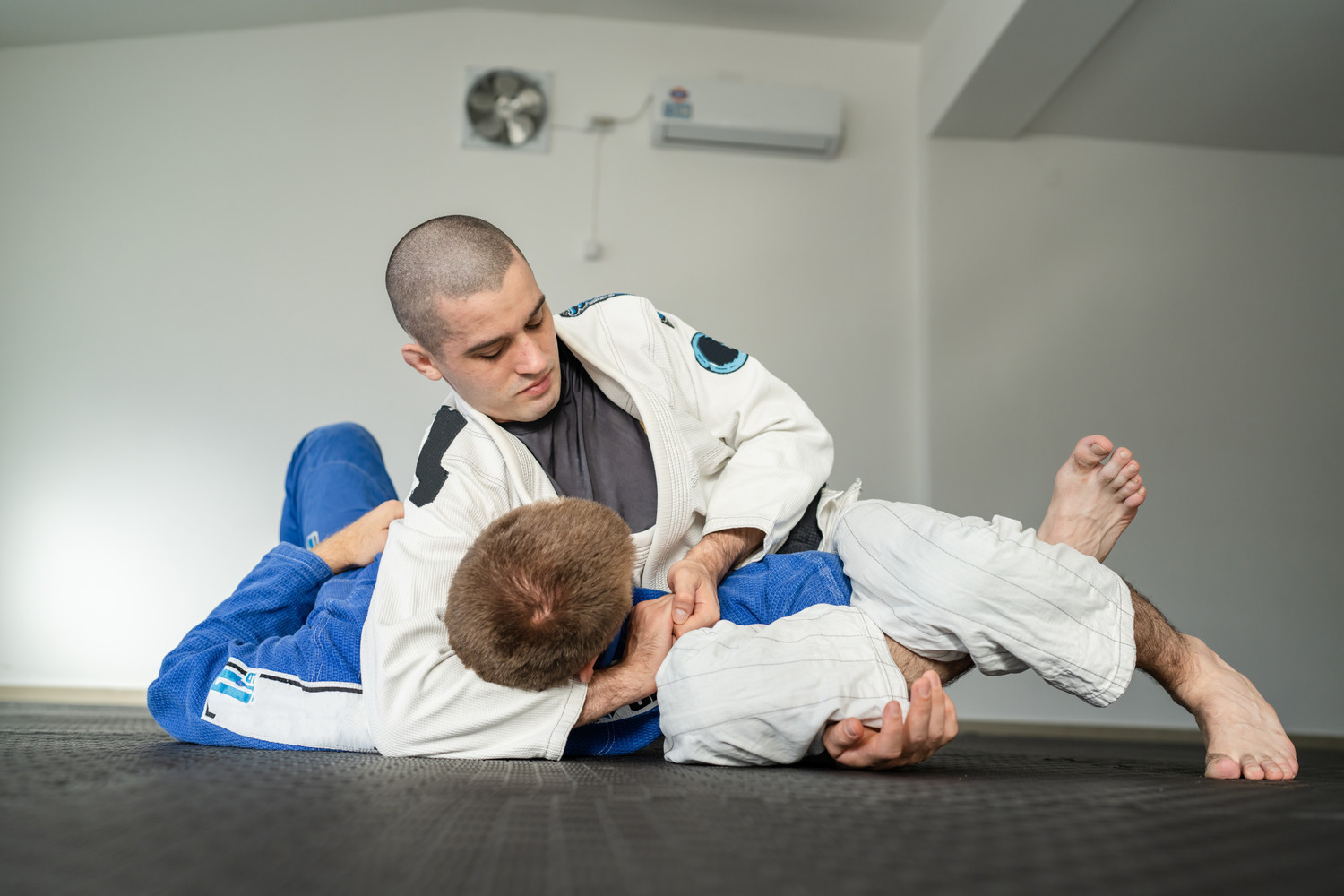Introduction
The most important skill in Brazilian Jiu Jitsu is to escape from the clutches of your opponent, this escape technique can completely change the course of the match because if you are not able to free yourself, then your opponent will overpower you badly.
And in the end you will feel embarrassed and defeated and along with it your confidence will also fall.
Therefore in today’s article you will get to know 10 fundamental bjj escapes you must know.
There are many positions in Brazilian Jiu Jitsu in which it is a little difficult to escape yourself and if you are a beginner in this field then it can be even more difficult for you to free yourself,
John Danaher says that the grappler should first focus on learning the techniques of survival and escape, because by learning this you can fight boldly and you can fight back by escaping yourself.
Escaping technique is such a skill that by learning any fighter can come back in the fight and can change the entire course of the fight, hence you must know how to escape in Brazilian Jiu Jitsu.
As a beginner, it’s crucial to focus on developing survival skills in BJJ. This entails learning about framing techniques, escapes and guard retention. By honing these skills you can reduce the risk of injuries.
Minimize the chances of being overwhelmed, by your opponents. Although they might not sound glamorous having a grasp of survival BJJ is essential if you want to improve your abilities.
It is very important for you to know what Kimora Lock is and what the guard position is in Brazilian Jiu-Jitsu.
Now let’s talk about the escapes of Brazilian Jiu-Jitsu that you must know about.
Back Mount Escape in BJJ
In Brazilian Jiu-Jitsu (BJJ), escaping the back mount, also known as “back control,” is a critical skill.

When your opponent is on your back, he can attack you with different submissions, such as rear naked choke, and control the match. In most cases you cannot avoid it because your eyes are down and you cannot see anything behind.
Step-by-Step Guide to Back Mount Escape in BJJ
- Hand Fighting – When engaging in hand, to hand combat it is essential to prioritize the protection of your neck. If your opponent manages to get behind you they may try to apply a chokehold. To defend against this make sure to tuck your chin and utilize your hands to block any attempts of them accessing underneath your chin.
- Hand Control – When you’re, in a grappling situation focus on limiting your opponents ability to secure the choke by controlling one of their hands or arms. A useful technique is to use a grip where you hold onto one of their wrists with both of your hands, known as a two, on one grip.
- Break the Hooks: To escape effectively, you need to disrupt your opponent’s leg hooks. Your opponent will usually have both their legs wrapped around your waist. Focus on one of the hooks first. For example, if they have their right leg wrapped around you, concentrate on that.
- Bump and Turn: With the hook side in mind, bridge your hips upward and toward the hooking leg. This motion aims to disrupt your opponent’s balance and create an angle.
- Remove the Hook: While you are bridging and turning, use the hand that’s controlling their arm to grab the ankle of the hooking leg. Pull it off your leg, creating space.
- Slide Down: As you pull off the hook, continue turning and sliding your back down towards the mat. This movement will put you in a position to work towards escaping or establishing a better guard.
- Establish Guard or a Better Position: Once you’ve successfully escaped the back mount, focus on recovering your guard (if you’re familiar with guard play) or transitioning to a more favorable position. Be mindful of your opponent’s movements and potential counterattacks.
It’s important to keep in mind that becoming proficient in Back Mount Escape(escaping from the back) requires practice. You should be able to adjust your technique based on the situation. How your opponent responds during sparring.
Regularly practicing with training partners and engaging in rolling sessions will contribute to enhancing your ability to escape from the back mount. Additionally seeking guidance, from your BJJ instructor can provide insights. Help you progress further.
Side Control Escape In BJJ
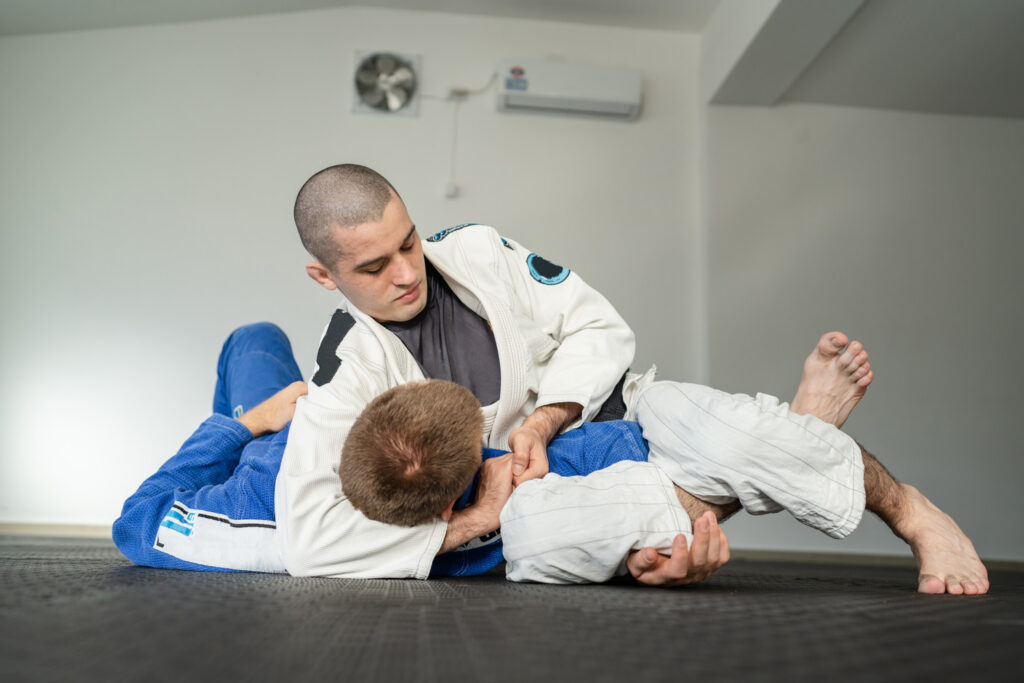
Before understanding side control escape, you have to understand what side control is. Side control is a dominant position in Brazilian Jiu Jitsu where you are on top of your opponent and push him to the ground. Side control gives you the advantage of transitioning into a submission, maintaining control, or gaining ground.
Side control escapes are essential in BJJ for several reasons. Firstly, escaping side control allows you to regain control and dictate the flow of the fight. It prevents your opponent from dominating the match and potentially submitting you.
Secondly, mastering side control escapes builds resilience and confidence in your grappling skills, enabling you to remain calm and composed under pressure. Lastly, effective side control escapes create opportunities to transition to more advantageous positions, such as full guard or mount, where you can launch your own attacks.
Step-by-Step Guide to Side Control Escape in BJJ
- Establishing a Strong Frame – To initiate your escape, from side control it’s important to establish a position. This defensive stance acts as a barrier between you and your opponent giving you the freedom to move and break free. By positioning your hands and arms you can effectively counteract pressure from your opponent and maintain some level of control in the situation.
With a focus on maintaining this position you can utilize your arms to exert pressure, against your opponents neck, shoulder or hips.
This creates space. Disrupts their balance. It’s crucial to keep your elbows tucked in to prevent your opponent from isolating one of your arms and gaining control over you.
- Using Hip Escapes to Create Space – Hip escapes, also known as shrimping movements play a role, in breaking free, from side control. By using your hips and lower body you can create the required space to regain an advantageous position. To execute a hip escape begin by lifting your hips off the ground while shifting your weight towards the side you intend to escape. Then extend your leg on the side. Place your foot firmly on the mat to push yourself away.
- Regaining Guard Position – Regaining control of the guard position is a goal when trying to escape from side control. The guard position offers control and various opportunities, for submissions or sweeps. To regain the guard follow these steps;
1. Create Space; Use hip. Create resistance against your opponent to make room for movement.
2. Insert Leg; Once you have created space slide one of your legs in between yourself and your opponent aiming to position your knee between both bodies.
3. Restore Full Guard; After inserting your leg keep shrimping (hip movement). Use your leg to hook onto your opponents leg preventing them from settling back into side control. With hip movement work your way back, into a guard position.
By following these steps you can effectively regain the guard position. Improve your chances of countering or escaping from side control.
- Utilizing Bridge and Shrimp Movements – Bridge and shrimp movements are useful techniques to employ when your opponent has a tight grip or heavy pressure from the side control position. These movements create opportunities to disrupt your opponent’s base and regain control.
The bridge is executed by lifting your hips and arching your back off the ground while driving through your opponent. This movement destabilizes their balance and shifts their weight, allowing you to create space and escape.
Shrimp movements involve using your legs and hips to move your body, generating the necessary space for escapes. By alternating your hip movement and leg extension, you can create enough space to escape and recover a more advantageous position.
- Countering Different Side Control Variations
Kesa Gatame: A side control variation with your opponent controlling your head and utilizing a scarf hold. To escape, focus on bridging, shrimping, and regaining guard position.
Crossface: When your opponent applies heavy pressure with their shoulder and arm across your face, countering with a strong frame using your arms and regaining control of your neck becomes essential.
Arm Underneath: If your opponent manages to secure an underhook, it’s crucial to be aware of potential submissions and prioritize regaining control of their hips to impede their progress.
Armbar Escape in BJJ?
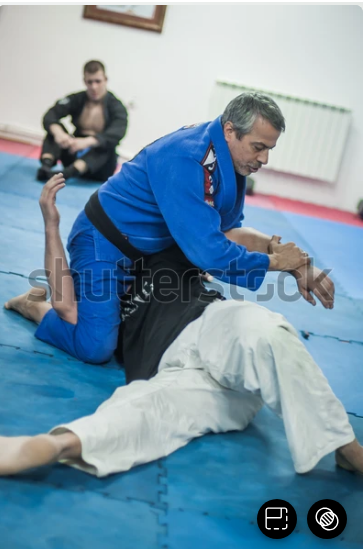
Armbar Escape in BJJ refers to a set of defensive techniques employed when an opponent tries to secure an Armbar submission. The Armbar, also known as the straight armlock or juji-gatame, is a highly effective submission maneuver.
It involves hyperextending the opponent’s elbow joint by controlling and isolating their arm, potentially leading to a tap-out or injury if executed successfully.
However, with the right knowledge and application of Armbar Escape techniques, you can prevent your opponent from achieving this dominant position and regain control of the fight. Let’s delve into the mechanics of Armbar Escape to understand how it works.
Step-by-Step Guide to Armbar Escape in BJJ?
Before we explore the specific Armbar Escape techniques, it is essential to grasp the fundamental mechanics behind these escapes. Armbar Escape is primarily about disrupting your opponent’s control and creating space to free your arm.
The key components of a successful Armbar Escape include:
- Grip Breaking: Break your opponent’s grip on your arm to weaken their control and limit their ability to execute the Armbar effectively.
- Posture and Base: Maintain a strong posture and create a solid base to resist the force applied by your opponent during the Armbar attempt.
- Hip Movement: Utilize hip movement to counterbalance your opponent’s control and create movements that disrupt their leverage.
- Escaping the Leg Grip: Address the leg entanglement by strategically removing your opponent’s legs from securing the Armbar, reducing their control and transitioning to a more favorable position.
Understanding these mechanics will serve as a foundation for executing various Armbar Escape techniques effectively. Now let’s explore the different variations of Armbar and their corresponding escapes.
Turtle Escape in BJJ?
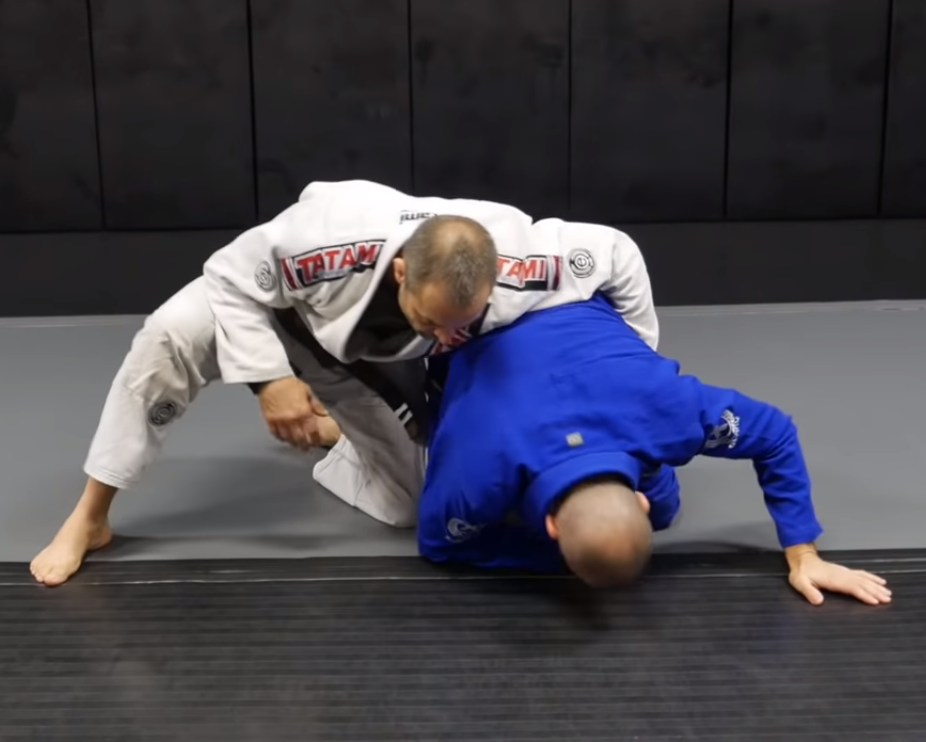
Before we embark on our journey to master the turtle escape, it is vital to understand the foundational aspects of this position. The turtle position typically occurs when an opponent has successfully taken your back or has transitioned from side control.
It is characterized by being on your hands and knees, with your opponent situated behind you, seeking control and potential submission opportunities. As you can imagine, it is a disadvantageous position, but with the right knowledge and techniques, it can be effectively countered and escaped.
Step-by-Step Guide to Turtle Escape in BJJ?
To successfully escape the turtle position, it is crucial to follow a set of fundamental principles. By incorporating these principles into your technique, you will create a strong foundation for your escape efforts. Let’s explore these key principles and accompanying techniques in detail:
Stance and Posture: Creating a Solid Foundation
Maintaining a strong stance and posture is the first step towards executing a successful turtle escape. By establishing a solid foundation, you make it harder for your opponent to control and manipulate your movements. Some essential aspects to focus on include:
- Keeping your head up and chin tuck to avoid potential chokes.
- Engaging your core muscles to maintain stability and balance.
- Widening your base by placing your hands and knees adequately apart.
Utilizing Frame and Leverage: Breaking Free
One highly effective technique in turtle escape is the usage of frames and leverage. Frames refer to the strategic placement of your arms and elbows, serving as barriers against your opponent’s control. Key techniques for employing frames include:
- Creating a forearm frame against your opponent’s hips or shoulders to prevent them from establishing a strong grip.
- Utilizing your elbows to create space for movement and to disrupt your opponent’s balance.
Leg and Hip Movements: Regaining Control
Proper manipulation of your legs and hips is essential for regaining control in the turtle position. By actively utilizing these body parts, you can create openings for escapes. Consider the following techniques:
- Using your legs to hook and break your opponent’s grips, allowing for increased mobility.
- Engaging your hips in a dynamic and explosive manner to create space and opportunities for counterattacks.
Counterattacks from the Turtle Position: Turning the Tables
While the main objective is to escape the turtle position, being able to launch effective counterattacks can significantly enhance your chances of success. By surprising your opponent with strategic offensive moves, you can shift the momentum in your favor. Important techniques to consider include:
- Transitioning into a single leg takedown or a double leg takedown when your opponent’s grip weakens.
- Executing sweeps, such as the Granby roll or the sit-out, to catch your opponent off-guard and gain top position.
North-South Escape in BJJ?
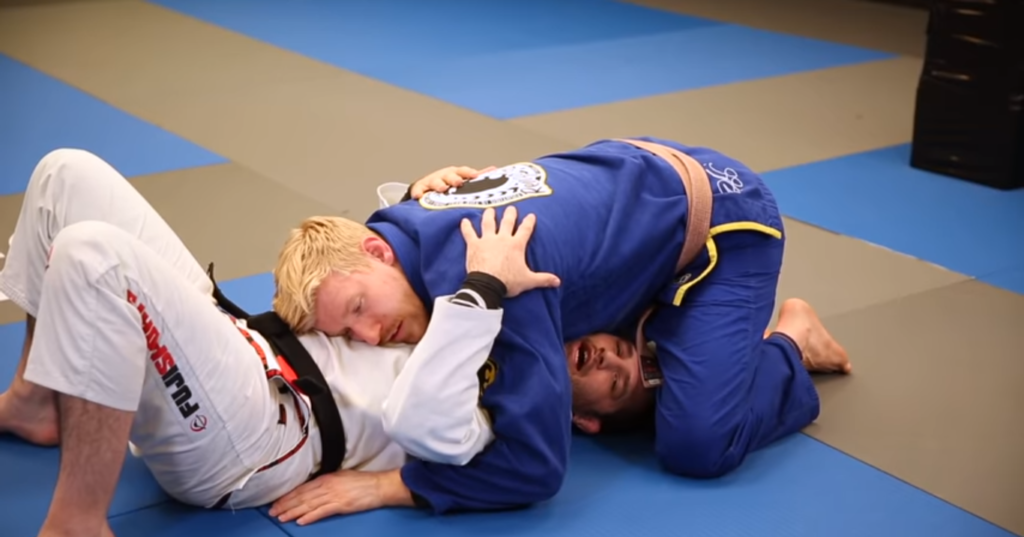
The North-South position in BJJ occurs when your opponent secures a dominant top position by moving their torso towards your head, while their legs wrap around your torso.
This position effectively allows your opponent to control and immobilize you, making it challenging to escape and regain control. Understanding the mechanics and dynamics of this position is essential in strategizing your escape plan.
Step-by-Step Guide to North-South Escape
There are several techniques you can utilize to escape the North-South position. While each technique has its own nuances, they all share a common goal of creating space, breaking your opponent’s control, and regaining proper defensive posture.
Technique 1: Frame and hip escape
The frame and hip escape technique is a fundamental and effective method to counter the North-South position. This technique involves using your arms to create frames against your opponent’s hips or shoulders, coupled with a coordinated hip escape to create space and regain guard or establish a defensive posture. Mastering this technique will provide you with a solid foundation for escaping the North-South position.
Technique 2: Bridge and roll
The bridge and roll technique is a dynamic escape that exploits your opponent’s weight distribution to remove their control. By executing a powerful bridge and quickly rolling to your side, you can disrupt your opponent’s balance and create openings for escape. Although this escape requires proper timing and precision, it can be highly effective when executed correctly.
Technique 3: Elbow escape
The elbow escape technique focuses on manipulating your opponent’s weight and positioning by utilizing your elbows. This technique involves creating space and inserting your elbow between your opponent’s body and yours, providing leverage to move and reestablish a defensive posture. The elbow escape is one of the most versatile North-South escapes, offering multiple options for recovery and counterattacks.
Single Leg Escape in BJJ?

Before we delve into the specifics let’s first clarify what the Single Leg Escape entails. In Brazilian Jiu-Jitsu (BJJ) the Single Leg Escape is a technique employed to counter an opponent’s attempt, at a single-leg takedown.
It involves creating distance redirecting the attack gaining control and ultimately managing to free oneself from the opponent’s grip.
By mastering the art of the Single Leg Escape you’ll be able to evade your opponent’s attempt to regain control over the situation and potentially transition into a more advantageous position.
It’s a skill that can truly shift the dynamics of a fight and provide you with an advantage, against opponents who may be stronger or more experienced.
Step-by-Step Guide to Single-Leg Escape
Now, let’s break down the Single Leg Escape into a step-by-step process to ensure you perform it correctly and effectively. By following these instructions, you’ll be well-equipped to counter any single-leg attack.
1. Creating Distance
The first step in executing the Single Leg Escape is creating distance between you and your opponent. This can be achieved by pushing off their shoulders or head while simultaneously stepping back with their free leg. By doing so, you create space and disrupt their balance, making it harder for them to maintain control over your leg.
2. Deflecting the Attack
Once you’ve created distance, the next crucial step is deflecting the attack itself. This involves using your arms and body positioning to redirect the force of your opponent’s takedown attempt. By angling your body and applying proper leverage, you can effectively thwart their attack and prevent them from gaining a dominant position.
3. Establishing Control
With the initial deflection, you now have the opportunity to establish control over your opponent. This entails securing a grip on their arm or upper body, essentially neutralizing their ability to maintain the single-leg position. By maintaining a strong grip and utilizing proper leverage, you can significantly impede their ability to further execute the takedown.
4. Executing the Escape
The final step of the Single Leg Escape involves executing the escape itself. Once you’ve created distance and established control, it’s time to break free from your opponent’s grasp. This can be done by driving your hips forward while maintaining your grip and simultaneously circling away from your attacking leg. By combining these movements, you’ll create leverage and momentum to free your leg and escape the single-leg position.
Full Mount Escape in BJJ?
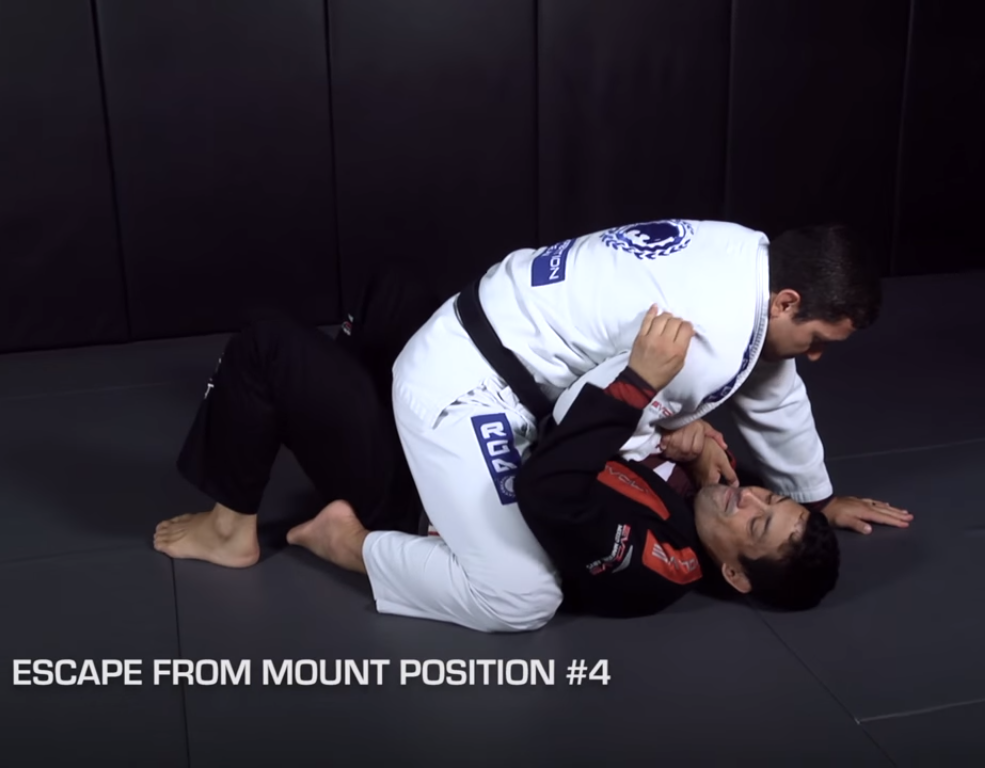
The full mount position is a dominant position in BJJ where one practitioner is on top, straddling their opponent’s torso with their legs, while having complete control over their upper body.
This position grants the person on top numerous attacking options while leaving the person on the bottom vulnerable to a variety of submissions and strikes.
When caught in the full mount, it is essential to remain calm and focus on escaping rather than panic. With the right knowledge and techniques, you can effectively escape from the full mount, regain control, and potentially even turn the tables on your opponent.
The Importance of Full Mount Escapes in BJJ
Full mount escapes are vital skills in BJJ as they allow the practitioner on the bottom to shift the dynamics of a match.
By successfully escaping the full mount, you can regain control, neutralize your opponent’s advantage, and potentially transition into a dominant position or launch your own offensive moves.
Mastering full-mount escapes not only enhances your defensive capabilities but also contributes to the development of a well-rounded BJJ game.
The ability to escape from various compromising situations demonstrates your resilience and creates opportunities to counter your opponent’s attacks effectively.
Triangle Escape in BJJ?
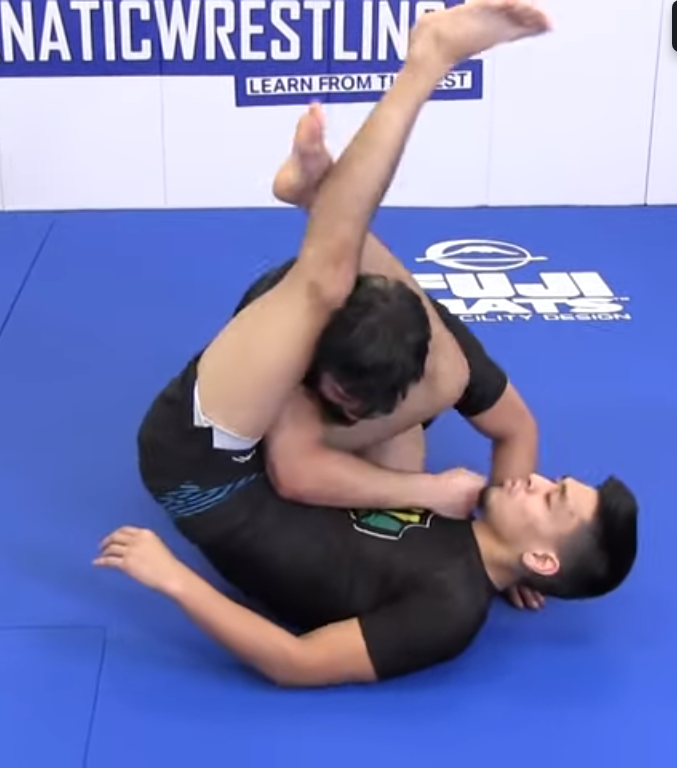
Before we explore the intricacies of escaping the triangle, let’s take a moment to understand what the triangle choke is.
The triangle choke is a submission hold commonly used in BJJ, where the attacker uses their legs to constrict the opponent’s neck and one of their arms, thereby cutting off the blood supply and causing discomfort or unconsciousness.
It is a highly potent technique and can be executed from various positions, making it a fundamental technique to master for both offensive and defensive purposes.
Key principles of triangle escape
Before we dive into specific techniques, it’s important to understand the key principles that underpin successful triangle escapes. These principles will serve as a foundation for your escape plan and guide your decision-making process when you find yourself trapped in a triangle choke.
- Maintain composure: Panicking will only exacerbate the situation. Stay calm, focused, and methodical in your approach to maximize your chances of escape.
- Control the attacker’s leg: The triangle choke is typically executed by the attacker using their legs to secure the hold. By gaining control over their legs or disrupting their grip, you can significantly weaken their stranglehold and create opportunities for escape.
- Create space: Creating space between your neck and the attacker’s constriction is crucial. This can be achieved through posture, stacking, and angling your body to relieve the pressure and lessen the effectiveness of the choke.
Now that we have a solid understanding of the triangle escape principles, let’s proceed to explore a range of effective techniques to free yourself from the clutches of the triangle choke.
Guillotine Escape in BJJ?
Guillotine escape in BJJ refers to the strategic maneuvering and technique employed to free oneself from the guillotine chokehold, a highly effective submission hold commonly used in Brazilian Jiu-Jitsu.
The guillotine choke involves applying pressure to an opponent’s neck and throat, leading to the potential for rapid submission. Mastering the art of guillotine escape is essential in BJJ, as it enables you to neutralize the threat, regain control, and potentially launch a counter-attack, turning the tide of the fight in your favor.
Step-by-Step Guide to Guillotine Escape
There are several key principles to keep in mind when executing guillotine escape techniques. By adhering to these principles, you enhance your chances of success in evading the guillotine choke. Let’s explore these principles:
1. Maintaining Proper Posture
Maintaining proper posture is essential when facing a guillotine choke. By keeping your head up, back straight, and shoulders squared, you create a more challenging target for your opponent to secure the choke. Proper posture also allows you to more effectively engage in breaking the grip and creating space for your escape.
2. Breaking the Grip
Breaking the grip of your opponent is a crucial step in escaping the guillotine. By preventing your opponent from fully locking in the choke, you reduce their ability to apply pressure and successfully submit you. Various techniques, such as hand fighting, arm positioning, and grip breaks, will empower you to break the grip and neutralize the threat.
3. Creating Space
Creating space is pivotal in executing a successful guillotine escape. By creating distance between yourself and your opponent, you decrease their ability to control your movements and maintain a tight submission hold. Effective hip movement, shoulder positioning, and bridge techniques are instrumental in creating the necessary space to escape.
Knee On Belly Escape in BJJ?
Mastering knee on belly escapes is crucial for any BJJ practitioner, as it enables you to regain control and neutralize your opponent’s advantage.
By understanding and implementing effective escape techniques, you can prevent your opponent from capitalizing on the knee-on-belly position and potentially transitioning into submissions or more dominant positions.
Moreover, being able to escape the knee on belly not only helps you survive but also builds your confidence and mental resilience on the mat. So, let’s uncover the techniques that will empower you to escape knee on the belly with ease.
Step-by-Step Guide to Escaping Knee On Belly in BJJ
1. Push to Open the Space
One effective way to escape knee on belly is by creating space between you and your opponent. Pushing against their knee with both hands can open up the necessary gap for your escape. By extending your arms and applying counter-pressure, you can create enough room to bring your knee inside and reclaim guard. This technique requires proper timing and quick execution to catch your opponent off guard.
2. Bridging and Shrimping Technique
Another powerful escape technique from knee on belly is the combination of bridging and shrimping. Begin by bridging your hips upward, lifting your opponent slightly and destabilizing their balance. As they respond to the bridge, quickly shrimp your hips out to the side and insert your knee in between you and your opponent’s knee. This movement not only disrupts your opponent’s base but also allows you to regain a more favorable position.
3. Regaining Guard
Regaining guard from knee on belly is a fundamental escape that every BJJ practitioner should master. As your opponent maintains knee on belly, focus on regaining control of their trapped leg. Using your arms, frame against their knee, and bring your free leg back into play. Once you have established control of their leg, utilize your grips and hip movement to recover your guard position. This classic escape can be highly effective if executed with precision and persistence.
4. Using Frames to Create Space
Creating frames with your arms is an excellent strategy to escape knee on belly. By placing your hands on your opponent’s chest and using them as leverage, you can create space and disrupt their balance. Properly positioning your frames and applying pressure allows you to control the distance, making it easier to phase out of the knee on the belly position. Remember to keep your frames active and ensure they are serving their purpose throughout the escape.
Wrapping Up On “10 Fundamental BJJ Escapes You Must Know”
Today I told you 10 fundamental bjj escapes you must know.
Whatever be the category in martial arts, it requires different skills like Brazilian Jiu Jitsu, if you talk about escape during the fight, then the ability to escape can be different in every player, but you have to know your skills during the fight.
You must know how to free yourself from your opponent, otherwise the competition may be against you.
Some people ask what are the easiest escapes in Brazilian Jiu Jitsu, the answer is that the ability to escape during a fight depends on many things such as your skill and your body weight and how much practice you have done. How well do you understand the fight of the fighter in front of you?
But today I have told you 10 escapes of Brazilian Jiu Jitsu which you must know, you can practice these escapes and become expert in it.
If you have joined the Brazilian Jiu Jitsu Institute, then you can ask this escape from your master because there are some common things that you must know about Brazilian Jiu Jitsu.
If you have any question related to this post then you can tell me, we will try our best to clear your doubt.
